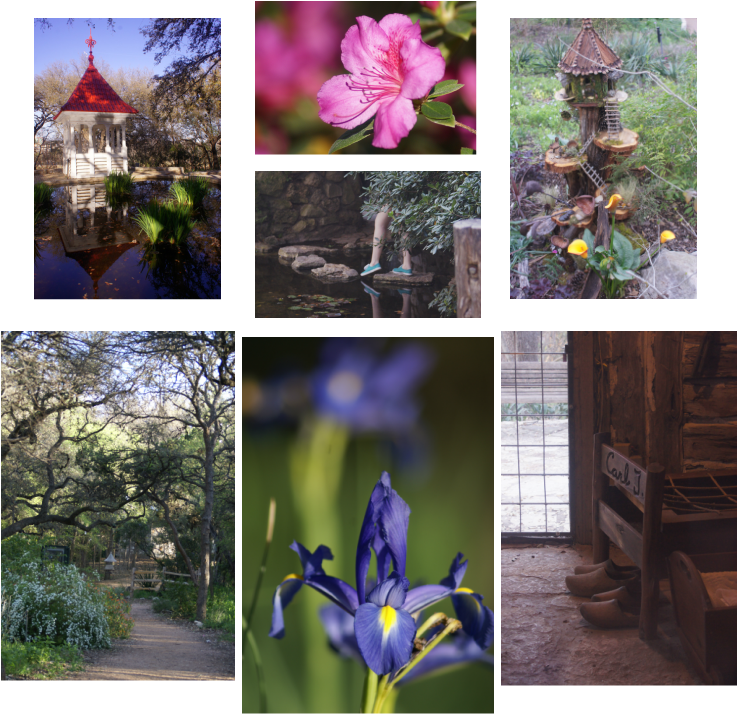|
New on the Site This Week From A Quilter's Life: A Star is Born and a Tutorial too. From Sitting At His Feet: Philippians 1:25-27... Making Progress Philippians 1:28-30...How to Face Opponents Prayer Labyrinth-came across something new and share my thoughts This link was shared with me yesterday, John MacArthur's thoughts on contemplative prayer- He has written a lot about prayer on his site Grace to You.org that I have enjoyed in the past. From Recipes: Beef Stroganoff Spaetzle  Things That Made Me Smile This Week -celebrating 29 years of marriage to the man of my dreams. -baby footprints on a pot. -finding a stash of chocolate I had hidden from myself...in plain sight. -remembering where I put that thing I forgot I lost. My favorite thought provoking posts this week from around the web... Rob Bell, Homosexuality, and the New Cultural Acceptance -"This is not a new problem. It’s a new face to an old problem. The church is being called to capitulate. Professing believers have done just that, with prominent examples coming to mind from the nineteenth- and twentieth-centuries. We know full well how this plays out. If we acquiesce to the culture, we will soon become a more religious version of the culture. On the other hand, if we stand fast in the power of God’s Spirit, we may lose some influence, some cache, some power. But we will honor the Lord." Owen Strachen makes some very good points that are worth a read. Praying for Politicians - "The church must be involved, but not in the way we so often have been. When the church seeks political power, the church inevitably ends up being corrupted. Creating or supporting particular political parties, policies, or philosophies is not the way of Christ. For the church to be identified with one political party is a sure-fire recipe for disaster.Does that mean we are doomed to be pious pietists, huddling in our small groups as the world rots, just waiting for the Lord to return? God forbid. The Bible gives us very clear instructions on how we are to participate in the political process—" David Robertson hits the nail on the head in this piece.  Ken and I made a trip to Austin over spring break in part to visit the special exhibit at the LBJ Library on the UT campus. It was a beautiful day for a drive to that area as the trees were blossoming and the spring flowers in full bloom.  We started our day in Austin with lunch a Maggiano's Little Italy. It was delicious as always. 
The Zilker Botanical Garden is another favorite Austin destination for us. There were faerie gardens hidden along our path, winding trails leading over stones to jump, bridges to cross and stairs to climb. There is even a bit of history in an old Swedish pioneer's cabin on the grounds. We always find things to delight us there.
Scrapbooking Time! We had a full house with the kids all showing up to help us celebrate 29 years of marriage. Samantha brought along her scrapbooking supplies. I wish I had taken a picture of all of us around the dining room table cutting and pasting our memories together. Of course all this scrapbooking meant we had to make a run to the craft store for supplies-it is so nice to have a girl along for these things so I am not the only one drooling over everything in sight. Our guys are very patient with us!
Happy Friday, Deb
0 Comments
What is a prayer labyrinth? That is the first question to answer. The following is taken from the introductory page of Labyrinth.org Labyrinth is an interactive installation for spiritual journeys. It's for anyone who wants a break from surfing the surface of culture to contemplate the deeper things of life. Labyrinth reshapes a 12th-century ritual for the 21st century. Its maze-like path takes you on a symbolic journey, creates space to unwind and think - in particular about our relationships with ourselves, one another, our planet and God. Designed for young and old alike, it provides a mixture of rituals and visuals, of contemplative words and contemporary ambient music, of symbols and media to help guide the spiritual traveller.Labyrinths were a feature of many medieval cathedrals - one of the best remaining examples is found in Chartres Cathedral in northern France. Unlike a maze they have only one path - there are no dead ends. People walk the labyrinth slowly, as an aid to contemplative prayer and reflection, as a spiritual exercise, or as a form of pilgrimage. This contemporary version includes music, meditations, art, media and symbolic activities at intervals along the path. Participants walk the Labyrinth with a CD player and headphones, in their own relaxing soundworld, at their own pace. Each track on the CD contains meditations, instructions and music relating to a part of the labyrinth [see Texts]. The path has three stages - the 'inward' journey, the centre and the 'outward' journey. The theme of the 'inward' journey is letting go of things which hinder our wholeness and inner approach to God. The centre of the Labyrinth is a space of meditative prayer and peace. The theme of the 'outward' journey is relationship - with ourselves, with others and with the planet - seen in the light of our relationship with God. I like to research. I read a lot about about prayer labyrinth's yesterday from those who support them and those who don't. I looked into the lives of the proponents of this "journey." I am pretty good about chasing those rabbits down whatever holes they go. Sometimes I think I research a thing to death and it can leave me feeling pretty confused. They say the devil is in the details however and this is a case where that may be much truer than we are comfortable admitting.
Contained within that introduction are the reasons for my concern with this practice- it centers around "contemplative prayer." That is the big thing on the scene in the church today. The Spiritual Disciplines or Spiritual Formation. There is a desire to experience God in a new way. The problem is these practices are not based upon Scripture, they pretend to be by taking verses out of context. By appealing to one's desire to know God more, to grow in the faith; many sheep are being led out of the safety of the fold onto some dangerous spiritual ground. I am not a stranger to that desire. I embarked on my own journey about 15 years ago to learn how to pray because I wanted a deeper relationship with God. I turned to Scripture. I immersed myself in God's Word. I, like the disciples so long ago, asked God to teach me to pray, to draw me closer to Him. He answered that little prayer through the power of His Word in my life. The hardest part about it is to sit down with my Bible and pray that He would teach me from it as I read. That is why I have problems with those who are trying to convince us we need to do something different to "experience God. The main Scripture I found being used to support these prayer practices known as contemplative prayer was Psalm 46:10, "Be still and know that I am God." It is a verse I have said to myself many times when I needed to quiet my heart. It is a verse that has been taken way out of context by the proponents of contemplative prayer. It is not talking about prayer at all. Did you know that? God is our refuge and strength, an ever-present help in trouble. Therefore we will not fear, though the earth give away and the mountains fall into the sea, though its waters roar and foam and the mountains quake with their surging. There is a river whose streams make glad the city of God, the holy place where the Most High dwells. God is within her, she will not fall; God will help her at break of day. Nations are in uproar, kingdoms fall; He lifts his voice, the earth melts. The Lord Almighty is with us; The God of Jacob is our fortress. Come and see what the Lord has done, the desolations He has brought on the earth. He makes wars cease to the ends of the earth. He breaks the bow and shatters the spear; He burns the shields with fire. He says, "Be still, and know that I am God; I will be exalted among the nations, I will be exalted in the earth." The Lord Almighty is with us; the God of Jacob is our fortress. Psalm 46, NIV I normally use my NASB translation when quoting Scripture, but in this case "Be still" is translated "Cease striving" and I did not want to confuse you with translations in making this point, though I think the NASB adds a rich dimension to the understanding of this Psalm. The point of this Psalm: God is our refuge, He is our strength, and we have nothing to fear. God does not always do things the way we would, the earth may shake violently, mountains may fall into the sea, nations may be in an uproar, kingdoms may be tottering, and in the midst of it all we are to understand that it is all God's doing. God will do what it takes to be exalted among the nations and it is not always going to be pleasant or a smooth ride. He is breaking bows and shattering spears, He is burning shields with fire. There is a lot going on and it sounds a bit alarming. His word to us is: do not fear, be still, cease striving against Me, trust Me because you know Me. This is not a call to draw into some quiet place, to empty our minds of all that distracts us- this is a call not to get in the way of God when He is at work. To be still here means to not speak against what God is doing, to not complain about what God is doing, to not act in a manner that opposes God or shows our ignorance about how He works in the world. Thus is revealed my first issue with those encouraging these types of prayer experiences- they do not rightly handle the Word of Truth (2 Timothy 2:15). This is but one of many instances where Bible verses are misused by those promoting Spiritual Formation/Disciplines of which prayer labyrinths are a part. A big red-flag to this Jesus girl. I walk and pray all the time, I drive and pray all the time, I quilt and pray all the time. I've have sat as close to a mountain top as my body would take me and prayed or along a stream bank in the middle of a quiet wood. My issue is not with the form as much as with what is being encouraged as we walk a prayer labyrinth. There are three stages to this labyrinth. The inward journey, which in my research revealed this is where one is to empty the mind in an attempt to be rid of all that would hinder your relationship with God. Once you reach the middle of the labyrinth you stay in this place until you receive a word from God, having emptied your mind so as to better hear His voice. This my friends is what transcendental meditation is all about. Remember what I said about the devil being in the details? There really is a spiritual battle raging, it is not one we can see, not one of flesh and blood. As I prepared for my current study in Philippians I read these verses many times: "Rejoice in the Lord always; again I will say, rejoice! Let your gentle spirit be known to all men. The Lord is near. Be anxious for nothing, but in everything by prayer and supplication with thanksgiving let your requests be made known to God. And the peace of God, which surpasses all comprehension, will guard your hearts and your minds in Christ Jesus. Finally brethren, whatever is true, whatever is honorable, whatever is right, whatever is pure, whatever is lovely, whatever is of good repute, if there is any excellence and it anything worthy of praise, dwell on these things. The things you have learned and received and heard and seen on me, practice these things, and the God of peace will be with you." -Philippians 4:4-9, NASB, emphasis mine. The Lord is near, He is with us. I do not need to engage in some "new" thing, the latest fade to come around to grow in my faith. I need to engage my mind, not empty it. In many ways what we are dealing with here is a reintroduction of gnosticism into the church. The gnostics that the Apostles were dealing with in the New Testament were attempting to blend their own philosophies and religious ideas with the Christian faith. Paul was confronting them specifically when he penned the book of Colossians where eastern ideas and doctrines were being introduced and practiced within the church. They were teaching that only those enlightened by their special brand of knowledge could really know who Jesus was or ever hope to understand God. It is why they were referred to as gnostics, as gnosis is the Greek word for knowledge. Salvation for gnostics comes by knowledge and experience, they receive direct revelation from the Spirit which is more important than Scripture. Do you see how that will lead to disunity in the church- if some people have special knowledge and experiences that others do not then they begin to think themselves better than others, smarter than others- it puffs up the individual rather than building up the body. And the introduction of these ideas of the spiritual disciplines is bringing with it disunity in the church. The people encouraging us to partake in contemplative prayer and its related practices have stumbled upon the ancient mystics and their practices, most particularly the practice of silence. It is within this silence that we can gain special knowledge, achieve a higher plain of spirituality. Richard Foster writes in his book Prayer: Finding the Heart's True Home why this silence is so important: The desert father Ammonas, a disciple of Saint Anthony, writes, “I have shown you the power of silence, how thoroughly it heals and how fully pleasing it is to God…. Know that it is by silence that the saints grew, that it was because of silence that the power of God dwelt in them, because of silence that the mysteries of God were known to them.” It is this recreating silence [of meditation] to which we are called in Contemplative Prayer (pg.173) In all my reads of Scripture I have never come across this idea of silence and am troubled by its ability to reveal to us the "mysteries of God." I told you I like to chase rabbit trails...I looked up silence in my Exhaustive concordance and found 35 entries. There are times when silence is appropriate: when God is about to announce judgement as in Revelation 8:1 or when we are under the yoke of suffering and waiting for God's salvation as in Lamentations 3:25-27. Nowhere did I find it as the means God uses to bring healing, growth, unleash power, or reveal mysteries- the idea that it is pleasing to Him? He ordered our silence when we were acting like fools. That is what a Biblical approach to silence looks like. I understand the desire to hear God's voice. I understand the desire to grow in one's faith. There is a right way to go about it. The Bible is where God reveals Himself to us. It takes no special ability to read it, no special rituals to reach some level of spiritual centeredness. One of the marks of a false prophet is that they claim to have received special knowledge. What I see in this movement is a pious proclamation that we are all missing something in our spiritual walk- we need to practice these disciplines in order to be more godly. We are telling people that they need to do something more than what God has already done for them and in so doing He will reveal Himself to us in a new way. Paul tells us in Romans 16:25-26 that God has revealed "the mystery" through the "Scriptures of the prophets"-He has laid all of the mysteries out in His Word. Dare I trust some unknown spirit that speaks to me in the silence. Peter warns us that there will be false teachers among us just as there were false prophets among the people of old. (2 Peter 2:1) That is a scary verse- they are not outside the church but within its very walls. And how do we tell a false teacher? Their source is a big one; do they rely solely on Scripture or do they rely on the teachings of men? Do they believe that everything God wants to reveal to us is revealed in the Bible or do they add to it. This idea of listening to God in the silence really concerns me. The powers of darkness are very real whether we talk about them in the church these days or not. As I said earlier, there is a spiritual battle going on, and I fear that it is in the silence that many are being deceived by the greatest Deceiver of all. He is a crafty devil telling us what we want to hear. Wrapping up his lies in just enough truth to sound good. How do we know that the voice we will hear in that silence is the voice of God? When the leaders who are practicing and promoting these ideas in our churches are standing up and saying that Jesus is just one of many ways to salvation, when they teach that hell does not exist and that sin is no longer sin I have to wonder. I have to wonder why I would participate in something they say I should do? I have to wonder why I would even listen to them in the first place? It is quite shocking to read what some of these men and women are teaching from their pulpits and books- these are not people proclaiming the Gospel of Christ, though few are being bold enough to say so. Instead we are welcoming them with open arms. And so I conclude that I will not participate in this prayer labyrinth. I will not open myself up to the ideas of contemplative prayer again. Been there done that and it was not a good trip. You see this is not something new, but something very old, something derived from the mystics of long, long ago. It goes back to heresies that were debunked before the Reformation. It has been repackaged for us, and I jumped in with both feet back in the 70's when Richard Foster's book Celebration of Discipline first came out. Many of us did out there on the west coast in those days. All I will say is that I believe it to be a false doctrine that has led some into occultic practices as they sat in the silence with empty minds waiting to be filled and in my experience it is no friend of the Gospel message I am propelled to share. You will find many of these same practices and symbols within the occult. Of course taking pagan symbols and rituals and using them in the church is nothing new- the Christmas tree for example- even some of the cross symbols we use today. But in this case the line can be so thinly veiled that, especially those who are new to the faith, may be led down an entirely different path than the one we intended. I will close with these excerpts from on eof the pages i came across in my research yesterday: Being westerners, we often fail to realize that seemingly harmless 'physical' techniques can have significant questionable spiritual impact on our lives.(2) One of the patterns with the dozens of new-age fads sweeping North America and the West Coast in particular is that they all pop up out of the blue but claim to have rediscovered an ancient secret technique that we all need. Many of them, including the fast-growing Labyrinth fad (3), even reconstruct a plausible but misleading Christian history used to persuade well-meaning Christians. The Labyrinth, as currently practiced, has very little to do with the Chartres Cathedral (4), and very much to do with Dr. Jean Houston's impact on the new-age-friendly Grace Cathedral in San Francisco. Dr. Jean Houston is listed on the Internet as one of the 10 top New Age speakers in North America (5) The inside cover of Jean Houston's 1997 book A Passion for the Possible describes herself as 'considered by many to be one of the world's greatest teachers' Of concern to renewal-oriented Christians is that Houston teaches her students on the 'Mystery School' how to speak in occult glossolalia.The Mythic Life, she credits H.F. Heard's novel Dromenon with its 'psychophysical state of ecstasy and spiritual awakening' as the inspiration to adopting the image of the Dromenon/Labyrinth as the symbol of her work. (12) Lauren Artress from Grace Cathedral (13) brought the Labyrinth back to her Cathedral after experiencing the Labyrinth at Jean Houston's Mystery School.(14) Jean Houston wrote in her 1982 book The Possible Human about 'the growth of Dromenon (Labyrinth) communities. (15) As acknowledged in Labyrinth WEBsites, the Labyrinth is a mandala (16), which is actually a Hindu occult (17) meditation process (18)brought to the Western world by the grandfather of the New Age, Dr. Carl Jung. (19) The Labyrinth has since spread to over 200 cities, and is making a measurable impact in Canada. Artress claims that "over a million people have walked the labyrinth at Grace Cathedral alone" (20) Even the infamous Starhawk, the self-declared practicing witch and colleague of Matthew Fox, is walking the labyrinth nowadays (21). One of the stated purposes of the Labyrinth is to connect us to the mother goddess, of which the labyrinth is a symbol. In her 1995 book 'Walking A Sacred Path: Rediscovering the Labyrinth as a Spiritual Tool', Canon Artress states that "The labyrinth is a large, complex spiral circle which is an ancient symbol for the divine mother, the God within, the goddess, the holy in all creation." (22) Artress says that "You walk to the center of the labyrinth and there at the center, you meet the Divine." May God grant us all wisdom, Deb |
AuthorI am a wife, a mother, a quilter, and most of all a follower of Jesus Christ. Join me on facebookFollow me on TwitterCategories
All
Archives
March 2016
|








 RSS Feed
RSS Feed